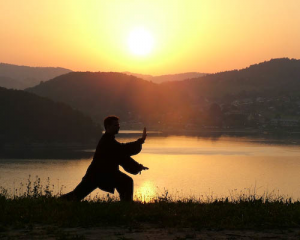 If you’ve watched “The Karate Kid,” you’re familiar with the story: Mr. Miyagi, the wise old Japanese maintenance man, prepares Daniel for a Karate championship in record time. His method? Countless hours of repetitive labor, which secretly mimic karate moves. After many days of mindless “wax on, wax off,” Daniel finds that he’s mastered the basic moves of Karate—all because of those endless hours of repetition. But is mindless repetition really the best way to practice?
If you’ve watched “The Karate Kid,” you’re familiar with the story: Mr. Miyagi, the wise old Japanese maintenance man, prepares Daniel for a Karate championship in record time. His method? Countless hours of repetitive labor, which secretly mimic karate moves. After many days of mindless “wax on, wax off,” Daniel finds that he’s mastered the basic moves of Karate—all because of those endless hours of repetition. But is mindless repetition really the best way to practice?
There are two styles of Practice
The first option is to repeat the new skill over and over again, trying to perfect it through sheer repetition. This was Mr. Miyagi’s approach, which is very common in martial arts, yoga, and other disciplines. The second option is “variable practice.” In this approach, instead of simply repeating the new skill over and over, you mix it up among a variety of other, related skills.
So which form of Practice is better?
To find the answer, researchers at USC and UCLA split volunteers into groups: Group A practiced a challenging arm movement over and over, while Group B practiced the same arm movement along with many others in a variable practice structure.
Results of the study? Group B, with the variable practice structure, retained the new skill significantly better than the repetitive-practice group.
Why is variable practice better?
It turns out that using a variable practice structure literally uses a different part of your brain. Simple repetitive practice engages the section of your brain called the Primary Motor Cortex, which is associated with the coordination and initiation of movement.
But when you use variety, you engage a part of your brain called the Prefrontal Cortex, which is associated with higher planning and problem-solving functions, as well as attention.
So with a variable-practice structure, your brain is solving the movement “puzzle” each new time it encounters it, instead of simply repeating the same “solution” over and over. This results in deeper learning.
If variable practice is better, why do we still do repetitive practice?
One reason that repetitive practice is still around is simply because it’s tradition. Generations of teaching in this way has resulted in an idea that this is what the word practice means. For many people, the moment you say the word “practice,” they envision endless repetition of the same thing until it’s “made perfect.”
People also use repetitive practice because it’s mentally easier. It requires much more creativity, thought, and attention to vary your practice structure. Repeating the same thing over and over requires little thought, so it’s easy to fall into this simple routine. Coming up with new variations can be difficult.
Stumped for variation ideas? Try a Feldenkrais® class
Variable practice is at the very heart of the Feldenkrais Method®. In fact, that’s why we call them movement “lessons.” Practitioners guide you through a structured series of subtle movement variations, keeping that problem-solving part of your brain highly engaged. The end result? Movement skills are learned in a deep, lasting way that feels almost magical.
So next time you’re learning a new skill, remember to use variety
Avoid falling into a mindless routine of “wax on, wax off” when you’re practicing. Instead, remember to emphasize variety. You’ll engage that problem-solving part of your brain, resulting in deeper learning and better retention. Mr. Miyagi may have worked miracles in the movie, but in real life…well, his method of practice could have been better.

